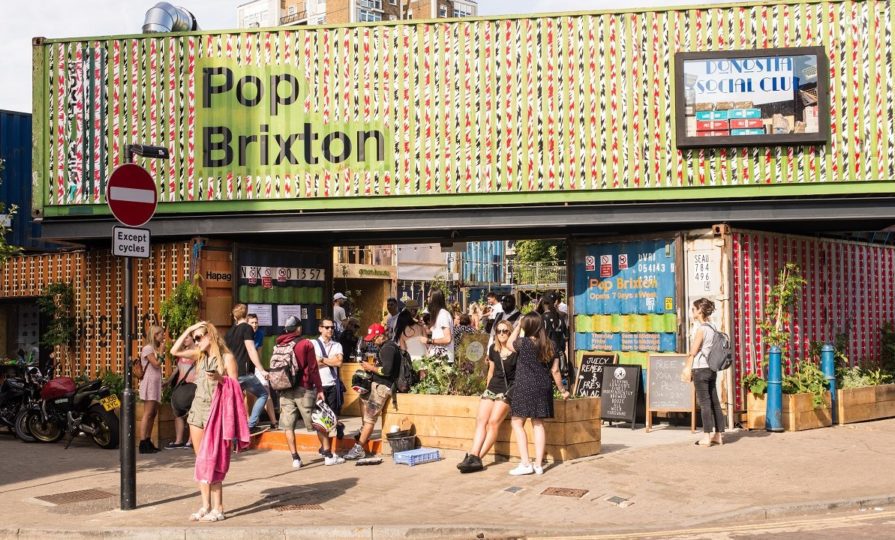Pop-up shops: a strategy for retailers
From emerging boutiques to established brands, pop-up shops have become a go-to tactic for retailers looking to create excitement and test new markets

In the ever-evolving landscape of retail, businesses are constantly seeking innovative ways to capture consumers’ attention and drive sales. One such strategy that has gained significant traction in recent years is the pop-up shop — a temporary retail space that offers a unique, limited-time shopping experience.
From emerging boutiques to established brands, pop-up shops have become a go-to tactic for retailers looking to create excitement and test new markets.
The pros
Novelty and exclusivity: Pop-up shops thrive on the principle of scarcity, offering consumers a sense of urgency to visit before they disappear. This exclusivity can drive foot traffic and create a buzz around the brand, fostering a sense of excitement and anticipation among shoppers.
Brand awareness and exposure: For both emerging brands and established retailers, pop-up shops offer an opportunity to increase brand visibility and reach new audiences. By strategically choosing high-traffic locations or partnering with complementary businesses, retailers can maximise exposure and attract potential customers who may not have encountered their brand otherwise.
Flexibility and agility: Unlike traditional brick-and-mortar stores, pop-up shops are adaptable. Retailers can experiment with different product offerings, store layouts, and marketing strategies without the long-term commitment or overhead costs associated with permanent retail spaces. This flexibility allows brands to stay agile in response to changing consumer trends and preferences.
Market testing and feedback: Pop-up shops serve as a testing ground for retailers to raise consumer interest and gather feedback on new products or concepts. By interacting directly with customers in a temporary setting, retailers can gain invaluable insights into what resonates with their target audience, informing future business decisions and product development.
Lastly, strategic partnerships: Collaborating with like-minded brands or influencers can amplify the impact of a pop-up shop, leveraging shared audiences and enhancing the overall experience for shoppers. By aligning with complementary partners, retailers can tap into new networks, cross-promote products, and create synergies that benefit all parties involved.
The cons
Short-term nature: While the temporary nature of pop-up shops can create a sense of urgency, it also presents challenges in sustaining long-term customer relationships. Building brand loyalty and repeat business may be more challenging when the retail experience is fleeting, requiring retailers to balance the allure of novelty with the need for ongoing engagement.
Limited time for ROI: Despite their potential for generating buzz and driving foot traffic, pop-up shops may not always translate into immediate sales or measurable ROI. With a limited window of opportunity, retailers must carefully evaluate the cost-effectiveness of their pop-up ventures and set realistic expectations for financial returns.
Logistical complexities: Planning and executing a successful pop-up shop requires careful coordination of logistics, from securing the right location and obtaining permits to managing inventory and staffing. Without proper planning and execution, retailers risk logistical challenges that can detract from the overall customer experience and undermine the success of their pop-up venture.
Brand dilution: In some cases, participating in too many pop-up events or choosing locations that are not aligned with the brand’s image can weaken its identity and erode consumer trust. Retailers must maintain consistency in their brand messaging and ensure that each pop-up experience reinforces their core values and positioning in the market.
Competition and saturation: As pop-up shops continue to proliferate in popular retail destinations, competition for prime locations and consumer attention intensifies. Retailers must differentiate their pop-up experiences through innovative concepts, compelling storytelling, and unique offerings to stand out amidst the sea of temporary retail activations.
The role of location
Location is a critical factor that can make or break the success of a pop-up shop. Choosing the right location requires consideration of various factors, including foot traffic, demographics, competition, and brand alignment.
High-traffic areas such as busy shopping districts, event venues, or popular tourist destinations offer increased visibility and exposure for pop-up shops. Retailers can capitalise on existing foot traffic to attract potential customers and maximise sales opportunities.
Therefore, understanding the demographics and preferences of the target audience is essential in selecting an appropriate location for a pop-up shop. Retailers should choose locations that align with their target demographic’s lifestyle, interests, and shopping habits to ensure relevance and resonance.
At the same time, assessing the competitive landscape and identifying complementary businesses or events in the vicinity can help retailers strategically position their pop-up shops for success. By capitalising on existing events, retailers can enhance the overall shopping experience and attract a broader audience.
Lastly, the aesthetic appeal and ambiance of the location should align with the brand’s image and values to create a cohesive and memorable experience for customers. Whether it’s a hip urban neighbourhood, a trendy pop-up market, or a cultural festival, the location should reinforce the brand’s identity and resonate with its target audience.









